
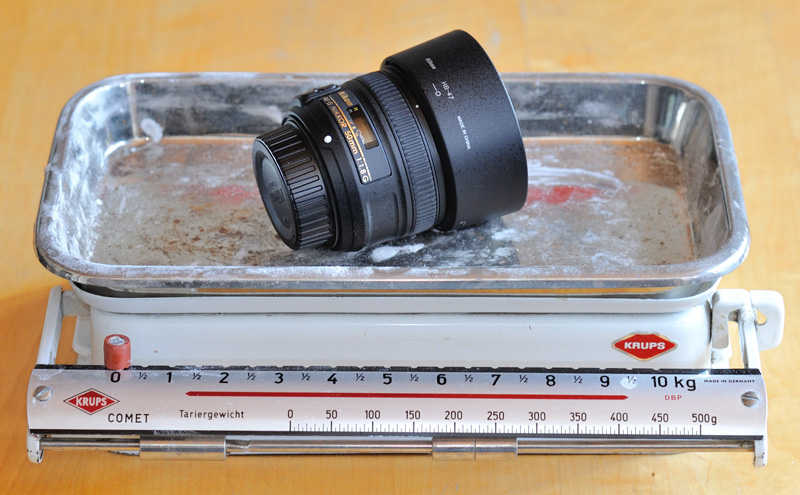
|
|
Given its size the AF-S Nikkor 50mm f/1.8 G is a surprisingly lightweight lens. |
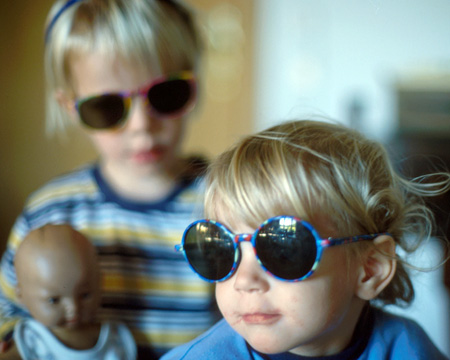
|
|
Trying their new sunglases. My children did that in the darkest corner of our flat. Thus, I had to shoot wide open with the Nikkor 50mm f/1.2 on my F4 (on Fujichrome Sensia). This image shows a weak point of the 50mm lenses: the nervous bokeh! |
For decades 50mm lenses were the standard on 35mm cameras. Optical engineers could design such a lens in their sleep. Even 50-year-old designs are able to deliver great results on a modern DSLR.
If you are photographing at F8 with the sun in your back, all the 50mm lenses from Nikon will deliver comparable results, from the Series E f/1.8 to the Nikkor f/1.2. Nevertheless the former 50mm designs (not counting the AF-S f/1.4, that I have not tried yet) still left room for improvement. Weak points are the nervous bokeh, the corner sharpness wide open and the vulnerability to flare and ghosts. To come straight to the point, except for the bokeh, this new design is a significant improvement!
The main reason for me to buy this lens was the fact that it does not change its length while focussing (although it is not an IF design). That makes it usable in conjunction with my ewa-marine underwater housing. I plan to use this lens under water later this year, stay tuned ...
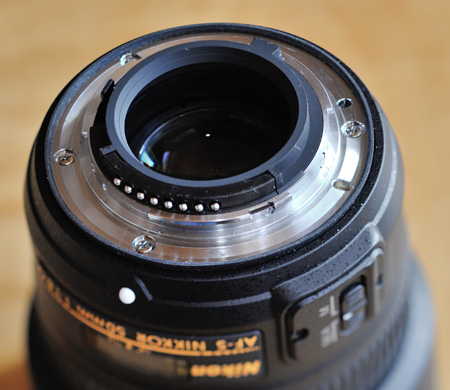
|
|
The mount is made of metal and has a weather sealing. |
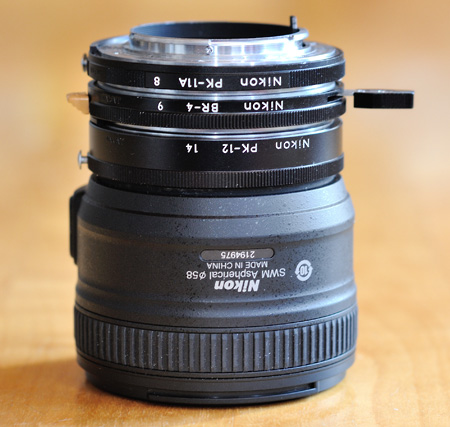
|
|
Due to the lack of an aperture ring 'G' lenses are normally useless in conjunction with tubes and similar macro accessories. But if you own a BR-4, designed for using on a bellows in conjunction with a double cable release, you can help yourself (on your own risk): the aperture lever of the BR-4 allows to control the aperture. But you don't have scales or engagements. Thus, it is not very accurate. Pay attention: the BR-4 should not be mounted directly to the camera or directly to an AF lens! You need additional tubes. Be careful when mounting the 'G' lens onto the tube! |
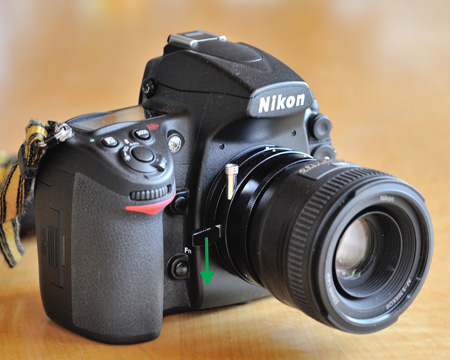
|
|
The spring inside the aperture lever mechanism of the BR-4 holds the aperture of the lens open. You can stop down the lens by moving the lever downwards. I recommend this workflow: set your camera (with AI interface!) to A mode. The camera shows the calculated shutter speed in the finder. This is the value for the open aperture. If you want to stop down the lens e.g. three stops, you have to divide the value by two three times. Then move the aperture lever of the BR-4 carefully downwards until the camera shows the shutter speed you have just computed. Now shoot! You need a bit of practise for it, but it works! This combination has a maximum magnification of about 1:1.3. Below, you will find an example image made with this setup. |
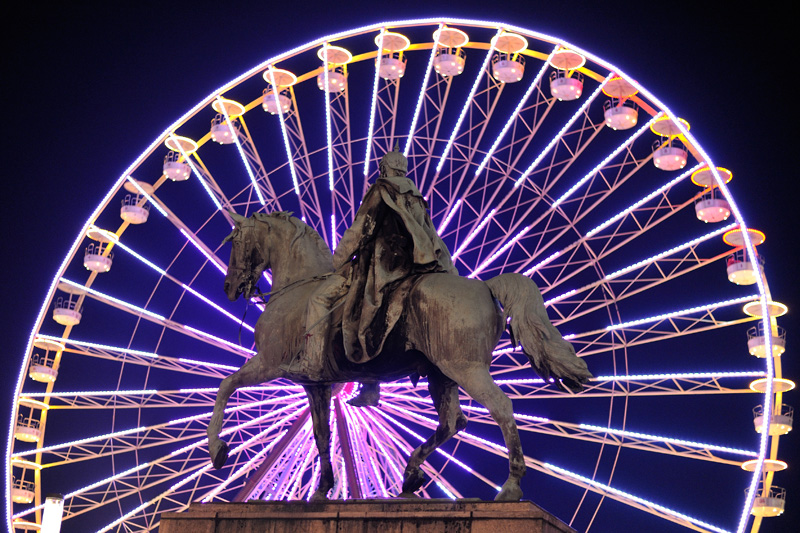
|
|
Wilhelm I (former German Emperor) is riding alongside a big wheel in the city of Essen. Data: D700, ISO 1600, F1.8, 1/50sec, hand-held. |
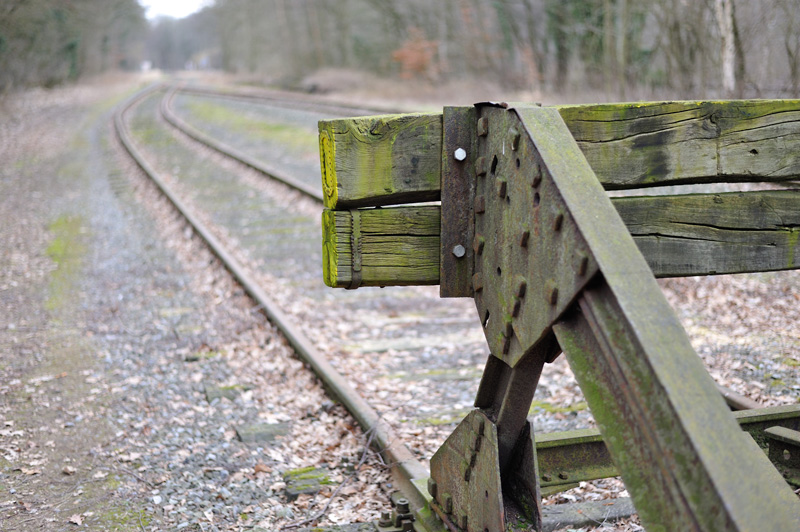
|
|
Buffer stop in the erstwhile Altenrheine freight depot. Shot at F1.8. The AF-S is sharp wide open, but not exactly a cream machine. See 100% crop below. |
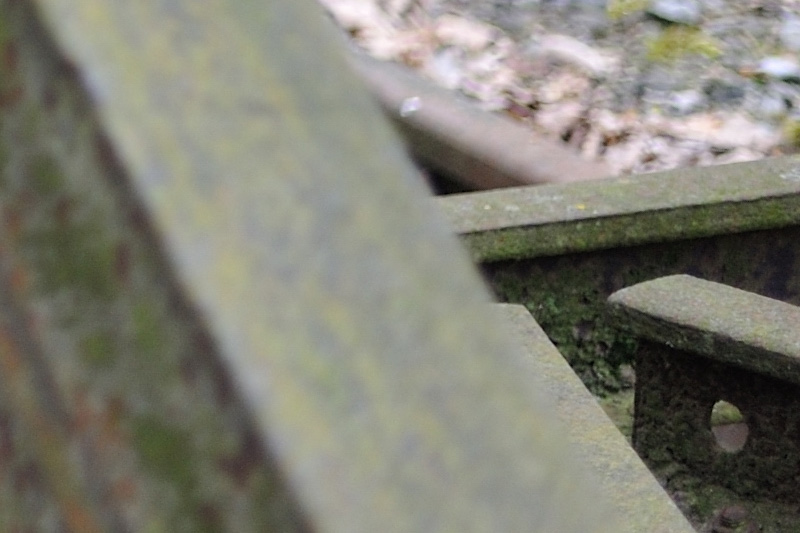
|
|
100% crop of the image above. |
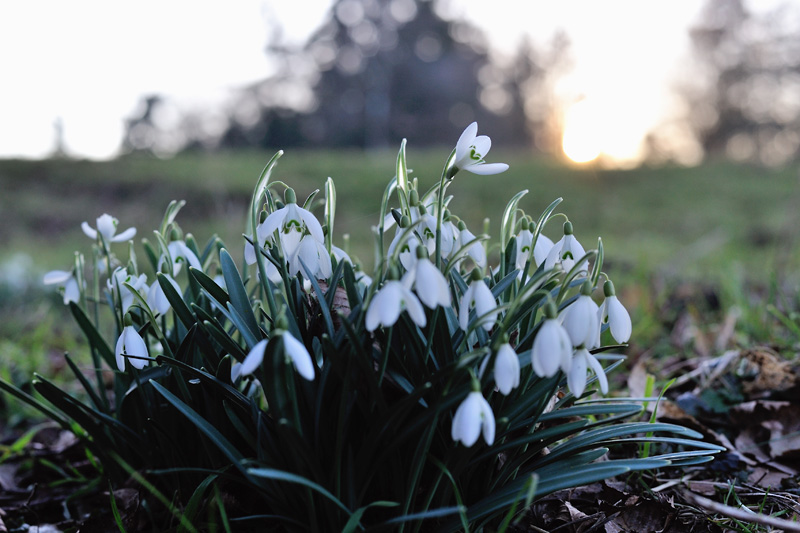
|
|
Snowdrops in the last sunlight. In our region Snowdrops (or Galanthus) are the first blossoming flowers of the year. Captured with the D700 at ISO 400 and F5.6 at closest focus. |
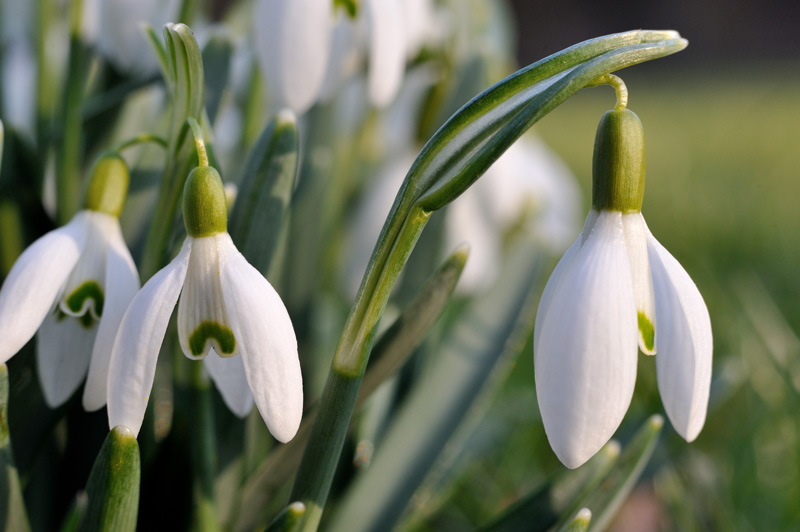
|
|
Going closer using the above described setup. The lens was stopped down to approx. F8. The D700 was set to ISO 800. As expected, the AF-S 50mm f/1.8 G works fine in the macro range. It would be much easier with a 'G' tube. As Nikon is able to build TCs for 'G' lenses a 'G' tube should be viable as well! |
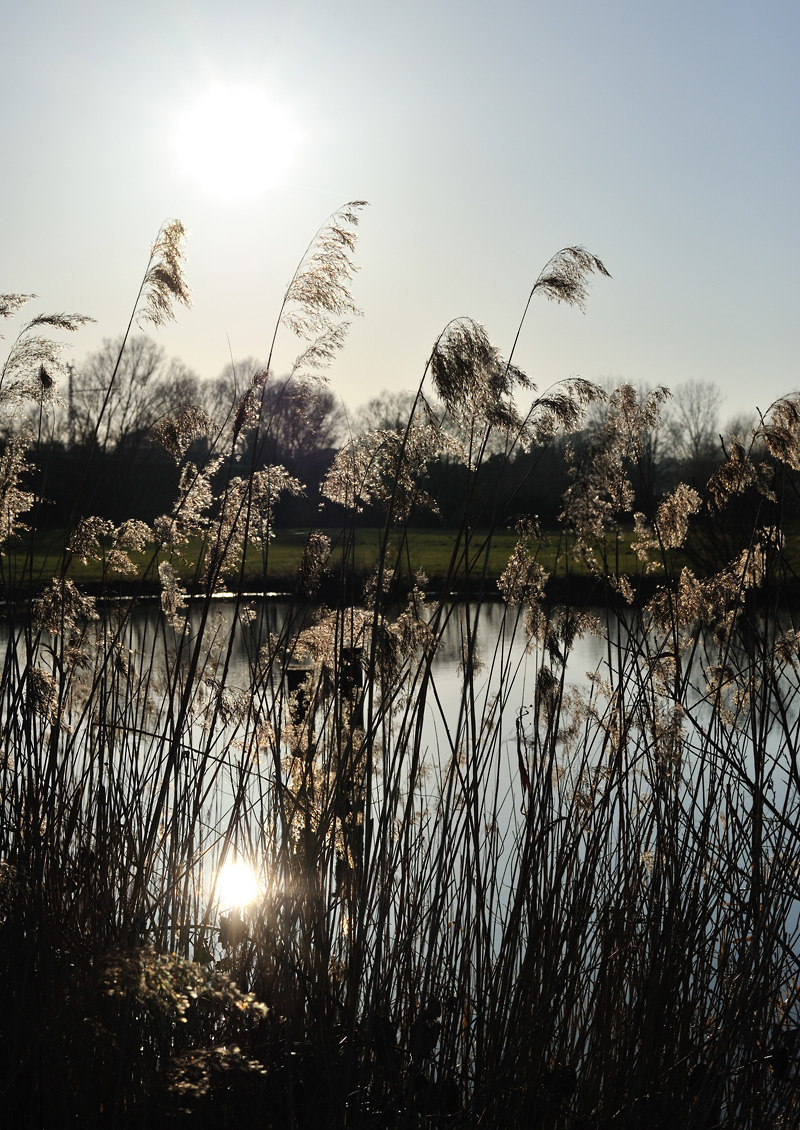
|
|
Good news: shooting into the sun rarely is a problem.
D700, ISO 400, F11. |